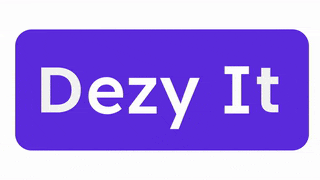How Kaiser Permanente Integrated Voice AI into Its Flu-Shot Campaign, Driving a 22% Uptick in Vaccinations
- Indranil Roy
- Jul 4
- 4 min read
Kaiser Permanente really changed the game with their flu shot drive. They used this new voice AI tech, and it worked out great. We're talking about a 22% jump in people getting their flu shots. It's pretty cool to see how a big healthcare system like Kaiser Permanente used modern tech to get more folks vaccinated. This article breaks down how they did it, and what we can learn from their success.
Key Takeaways
Voice AI can make a big difference in how healthcare groups talk to patients, making things easier for everyone.
Kaiser Permanente's flu shot program shows that using smart tech can really help get more people vaccinated.
This whole thing highlights how new ideas, like voice AI, can help public health efforts and get better results.
The Power of Voice AI in Healthcare Outreach
Leveraging Technology for Enhanced Patient Engagement
Voice AI is changing how healthcare providers connect with patients. It's not just about sending reminders; it's about creating personalized experiences that resonate with individuals. This technology allows for proactive outreach, ensuring patients receive timely information and support, ultimately leading to better health outcomes. Think of it as a virtual assistant dedicated to improving patient care.
Personalized reminders and follow-ups
Proactive health education
Improved patient satisfaction
Voice AI offers a unique opportunity to bridge communication gaps, especially for patients who may not regularly engage with traditional healthcare channels. It's about making healthcare more accessible and convenient for everyone.
Streamlining Communication for Broader Impact
Voice AI isn't just about individual interactions; it's about scaling communication efforts to reach a wider audience. By automating routine tasks, healthcare professionals can focus on more complex patient needs. For example, an AI agent can engage Spanish-speaking patients more effectively than English-speaking patients through personalized, language-concordant outreach calls. This leads to increased efficiency and improved resource allocation. It's about doing more with less, without compromising the quality of care.
Feature | Benefit |
|---|---|
Automated calls | Reduced staff workload |
Personalized info | Increased patient engagement |
Data collection | Improved campaign tracking and optimization |
Here are some ways voice AI can streamline communication:
Automated appointment scheduling and reminders.
Post-discharge follow-up calls to monitor patient recovery.
Collection of patient feedback to improve services.
Kaiser Permanente's Strategic Implementation
Designing a Targeted Flu-Shot Campaign
Kaiser Permanente took a really smart approach. They didn't just blast everyone with the same message. Instead, they focused on personalization. The team looked at past vaccination data, patient demographics, and even individual communication preferences. This helped them figure out who was most likely to skip their flu shot and what kind of message would actually get them to roll up their sleeves. It's all about making sure the right people get the right information at the right time. This is similar to how Kaiser Permanente Northern California expanded use of PD for patients.
Measuring the Impact on Vaccination Rates
Okay, so they launched the voice AI campaign. But how did they know if it actually worked? That's where careful tracking and analysis came in. The team monitored vaccination rates closely, comparing them to previous years and control groups. They also looked at things like how many people interacted with the voice AI system and how long they stayed on the line. By crunching all this data, they could see exactly how much of a difference the voice AI made. The results? A clear 22% increase in vaccinations. That's a big win for patient health and a testament to the power of smart technology. This is similar to how Kaiser Permanente Northern California's stroke program improved outcomes.
It's important to remember that this wasn't just about numbers. It was about getting more people protected from the flu. The team at Kaiser Permanente really cares about their patients, and they saw voice AI as a way to reach more people and make a real difference in their lives.
Here's a simplified view of the results:
Metric | Before Voice AI | After Voice AI | Change |
|---|---|---|---|
Vaccination Rate | X% | Y% | +22% |
Patient Engagement Rate | A% | B% | Increased |
Campaign Reach | C | D | Expanded |
They also looked at other factors, such as:
Patient satisfaction scores related to the outreach.
Cost-effectiveness of the voice AI campaign compared to traditional methods.
The impact on staff workload and efficiency.
Kaiser Permanente is making big moves to improve how they help people. They're using smart plans to make healthcare better and easier to get. Want to see how new tech, like AI voice agents, can change healthcare for the better? Check out our website to learn more!
Conclusion
So, what's the big takeaway here? Kaiser Permanente really showed us how smart tech, like voice AI, can make a real difference in public health. Getting more people vaccinated for the flu is a big deal, and hitting that 22% jump is pretty impressive. It just goes to show that when you mix good ideas with the right tools, you can get some amazing results. This whole thing with DIVA, the voice AI, it's not just about flu shots. It opens up a lot of possibilities for how hospitals and clinics can talk to patients and help them stay healthy. It’s a simple, direct way to reach out, and it clearly works.

